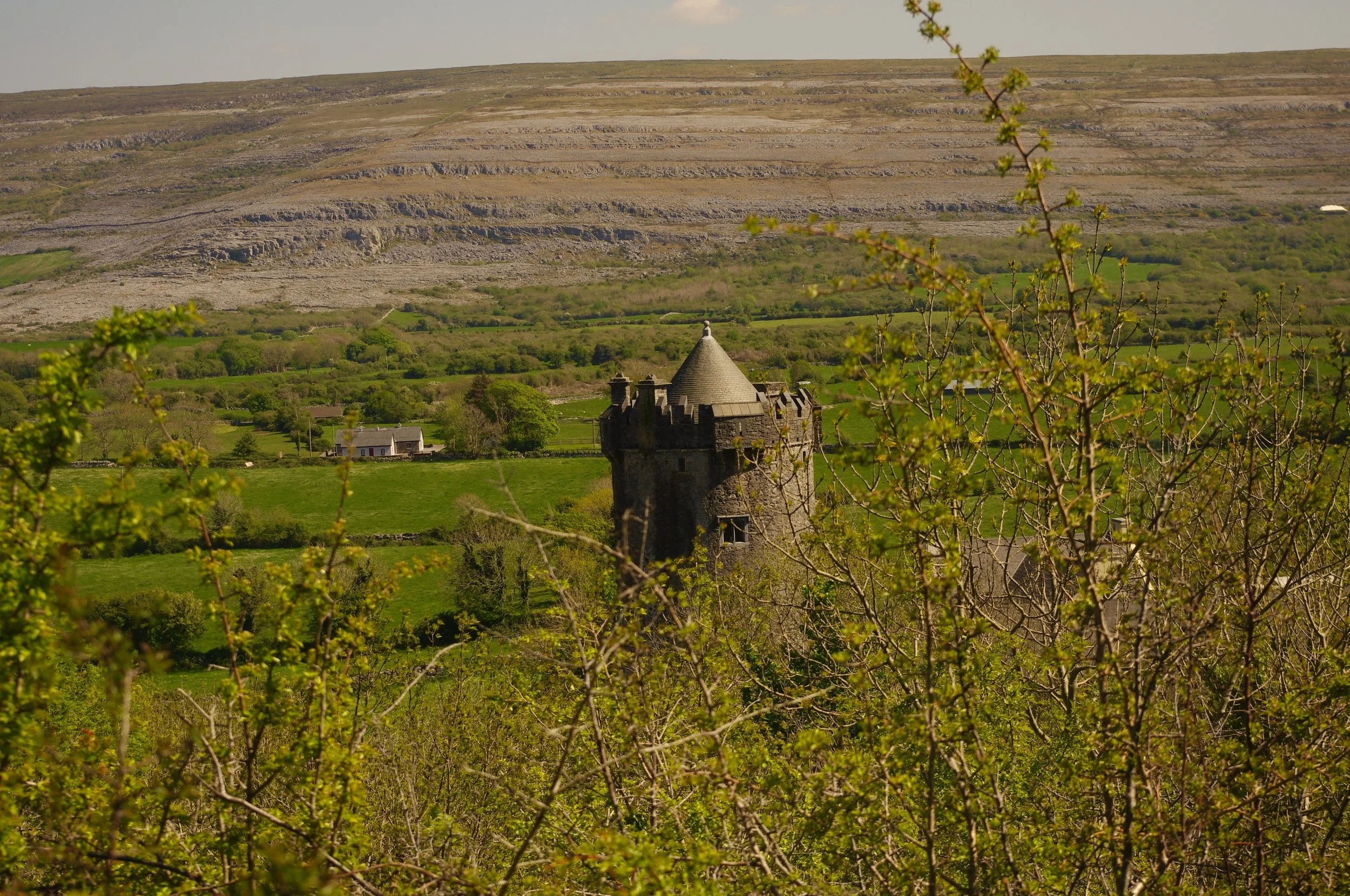Why does travel generate comparisons? Perhaps because we carry within us traces of many places and deep residues of ‘home’. And so we fling our memories of the recently left precious-place into experience of the new-and-strange and mark off the balance sheet. And then there’s imagined space, such as the lingering memory of a childhood beach or farm holiday that re-emerges as a longed-for-place that we might fantasise as potential home. I often imagine, and am delighted when I find it, a long grassy pathway leading to a secluded house surrounded by hedges and fields. My favourite holidays as a child were spent on a farm like that, in the Dandenong Ranges in Victoria. The Burren College and its tower have that quiet, reclusive quality made all the more enticing by the narrow hedged lane that takes you there.
These examples are meagre and too generalised; there are many layers and potentials to lived experience of space, place and home. For me, a sense of Home rises like Phoenix whenever I move away from the familiar. I begin to compare and drop quickly into a cauldron of past, present and future: sometimes it’s longing etched with regret; or it might be eagerness for something new that swiftly becomes uncomfortable. Here, in the Burren, I’m in the stir, the stew, the longing: the inevitable intersection of place with time. Already a week has passed and I can feel my roots pushing down, only to be dug up in three weeks’ time. Will I feel at home by then? Or lost?
And here I go again, comparing Ireland (a ‘could-be’, ‘would-be’ home) to Tasmania (my ‘chosen’ home). Both islands share tragic and reclaimed histories and spectacular and fragile landscapes, and many more differences and similarities of course. What about climate? The weather here on the west coast is changeable and generally cool. Temperatures are lower on average than in Tasmania due to the cold winds off the Atlantic and the relative higher latitude. I haven’t experienced a winter here. I imagine long dark days with frosts in the valleys, snow on the hills and slicing winds. But locals say it was mild this year. And today the spring sun is warm and constant.
So, I’m asking questions about climate change in this part of the planet. What is the impact on Ireland? Will this carpet of green ever be in drought? The water table is so high here that if you walk through fields you have to watch out for karst places, where the limestone has dissolved and sink holes suddenly appear (into which you might disappear). When it doesn’t rain here the weather report is “dry”, like it’s a rare phenomenon. The vendors at the craft market today said it won’t last, this sunny weather, and that the extended “dry” is unusual. I can’t imagine a brown Ireland.
And in Tasmania: we had an autumn almost like summer: no rain and brown. On the east coast, as the water warms, the kelp is rapidly receding, its roots decimated by invading urchins. The hairdresser in Belfast told me that as the temperatures have increased the weather has worsened in Ireland: more changes and cloud cover and frequent rain. On the west coast, in co Clare, the manifestations of a warming world are still a mystery to me but a quick search of scientific articles supports that an increase in pests, higher temperatures and poorer weather in general are all impacting on farming and loss of biodiversity.
It's as if time is reducing to what will keep us alive: hope, action and trees.
looking from the second floor of the tower





